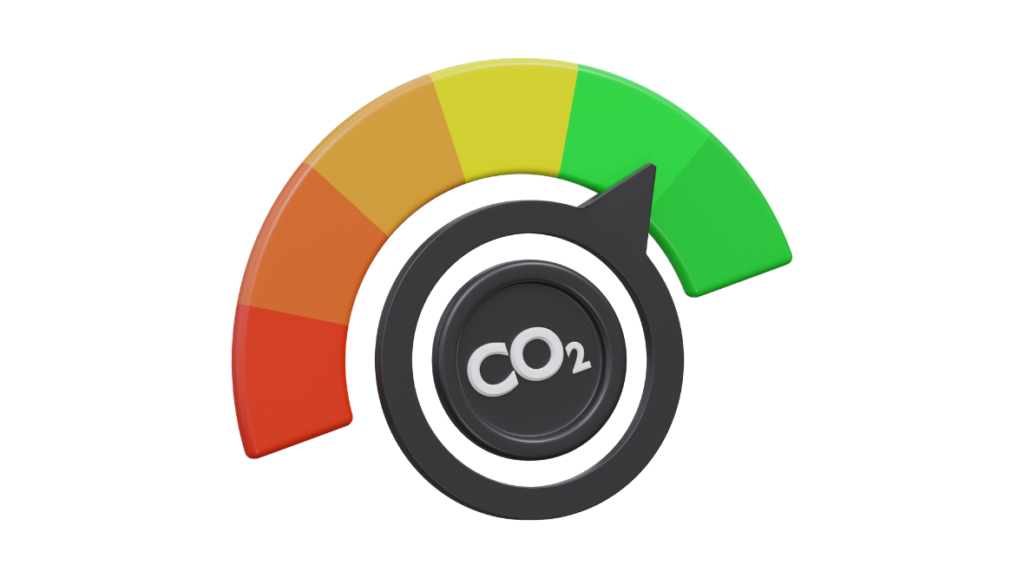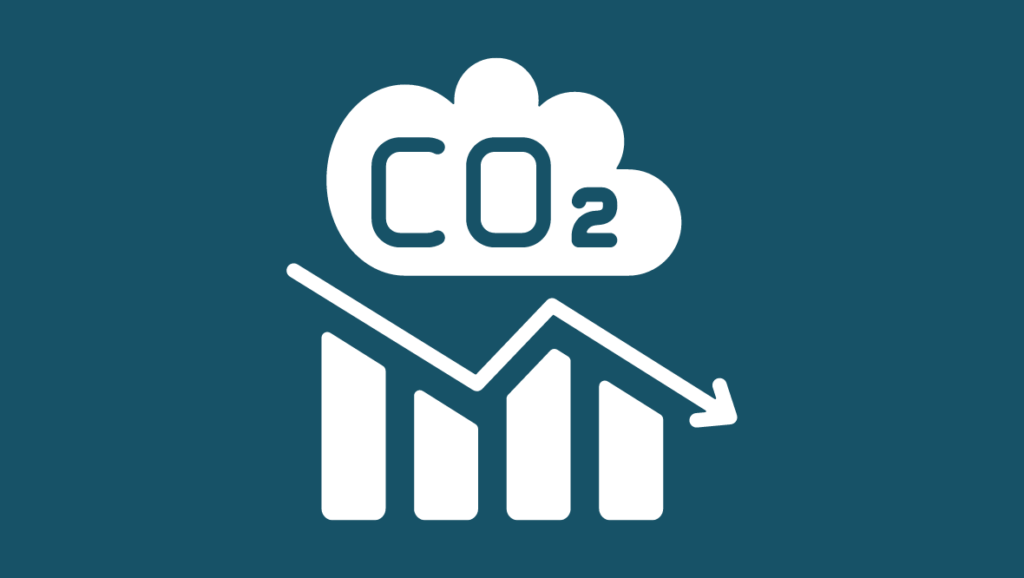Carbon Footprint 101: Measure Your Business’ GHG Emissions

Learn how to measure your business’s carbon footprint/greenhouse gas emissions with this comprehensive guide.
Businesses today are increasingly focusing on understanding, measuring, and mitigating their environmental impact. Measuring your carbon footprint, particularly your greenhouse gas (GHG) emissions, forms a fundamental part of this process. It systematically allows businesses to pinpoint areas of environmental concern, paving the way for informed and impactful decision-making.
This article, “Carbon Footprint 101: Measure Your Business’s GHG Emissions,” serves as a comprehensive guide for companies looking to quantify their carbon footprint. Our aim is to elucidate the standardized approach to carbon footprint measurement, rendering a complex task understandable and actionable.
What is a carbon footprint?
Carbon footprint is the quantification of greenhouse gas emissions generated by a specific activity. These emissions are typically measured in units of carbon dioxide (CO2) and provide a tangible reflection of the environmental impact of that activity. Greenhouse gases are gases that trap heat in the atmosphere, causing climate change. The most common greenhouse gas is carbon dioxide, but others include methane, nitrous oxide, and fluorinated gases. There are two main types of carbon emissions: direct and indirect.

1. Direct Emissions
Direct emissions are the emissions that come directly from a company’s operations, such as from running its machinery or burning fossil fuels. Examples of direct emissions include:
- Emissions from the combustion of fossil fuels for electricity, heat, and transportation
- Emissions from industrial processes, such as cement production and metal smelting
- Fugitive emissions from oil and gas production and transportation
- Emissions from agriculture, such as methane from livestock and nitrous oxide from fertilizer use
2. Indirect Upstream and Downstream Process Emissions
Indirect emissions are the emissions that come from the company’s supply chain, such as from transporting its products or disposing of its waste. Examples of indirect emissions include:
- Emissions from the transportation of raw materials and finished products
- Emissions from the production of electricity that is used by the company
- Emissions from the disposal of the company’s waste

Why measure your business’ carbon footprint?
As the planet heats up due to the fast-rising concentration of greenhouse gases in our atmosphere, the urgency to act – cut down on emissions—is ever-increasing. Businesses are at the forefront, facing the demand for more transparency and immediate deliberate action. In this context, carbon footprint measurement is an important tool they can use to measure, disclose, and cut down on future emissions.
Measuring a business’s carbon footprint is the first step in reducing its environmental impact. It provides a comprehensive overview of the greenhouse gases emitted by the business, both directly and indirectly. This information can then be used to identify areas where emissions can be reduced.
There are many benefits to measuring a business’s carbon footprint, including:
- Reduced costs: Energy efficiency measures can lead to significant cost savings for businesses. For example, a study by the Carbon Trust found that UK small and medium-sized enterprises (SMEs) could save approximately £400 million in energy costs and over 2.5 million tonnes in C02 emissions by reducing their carbon footprint.
- Improved brand reputation: Consumers are increasingly looking to buy from businesses that are committed to sustainability. Measuring and reducing a business’s carbon footprint is a great way to demonstrate this commitment.
- Regulatory compliance: Many governments are now introducing regulations that require businesses to report on their carbon emissions. Measuring a business’ carbon footprint will help it to comply with these regulations.
- Contribution to a more sustainable future: By reducing its GHG emissions, a business is helping to protect the environment and create a more sustainable future.

How to measure your business’s carbon footprint?
Carbon footprint analysis, synonymous with greenhouse gas inventory, is typically the measurement of greenhouse gas emissions of six types of gases as included in the Kyoto Protocol. These are CO2 (Carbon dioxide), N2O (Nitrous oxide), CH4 (Methane), and other anthropogenic gases such as sulfur hexafluoride, hydrofluorocarbons (HFCs), and perfluorocarbons (PFCs).
- To measure your business’ GHG emissions, you will need to identify all of the sources of greenhouse gas emissions from your business activities. This includes both direct emissions, such as those from burning fossil fuels in your own operations, and indirect emissions, such as those from the transportation of your products or the disposal of your waste.
- Once you have identified all of your sources of emissions, you will need to quantify them. This can be done by using emissions factors, which are conversion factors that relate a specific activity to an amount of greenhouse gas emissions. For example, the emissions factor for burning coal is 820 kg of CO2 per tonne of coal burned.
- After you have quantified your emissions, you can calculate your total carbon footprint by adding up all of your direct and indirect emissions.
Standards and Tools Used to Measure Carbon Footprint
GHG Protocol
There are a number of different tools and resources available to help businesses measure their GHG emissions. The Greenhouse Gas Protocol (GHG Protocol) is a widely used framework for measuring and reporting greenhouse gas emissions. The GHG Protocol provides detailed guidance on how to identify, quantify, and report greenhouse gas emissions.
Here are some of the steps involved in measuring your business’ carbon footprint using the GHG Protocol:
- Identify your greenhouse gas sources: This includes both direct and indirect emissions.
- Choose a boundary: This is the scope of your emissions that you want to measure. It could be your entire business, a specific division or product line, or a single project.
- Collect data: This includes data on your energy consumption, transportation, waste generation, and other activities that produce greenhouse gas emissions.
- Calculate your emissions: Use emissions factors to convert your activity data into greenhouse gas emissions.
- Report your emissions: This can be done internally or externally, depending on your needs.

ISO 14067
ISO 14067 is an international standard that provides principles, requirements, and guidelines for the quantification and reporting of the carbon footprint of a product. It is part of the ISO 14000 family of standards, which are specific to environmental management.
To measure emissions using the ISO 14067 standard, businesses must first identify the boundaries of their product’s life cycle. This includes all of the activities that contribute to the production, use, and disposal of the product. Once the boundaries have been identified, businesses must collect data on all of the greenhouse gas emissions associated with those activities.
The ISO 14067 standard provides guidance on how to collect and quantify greenhouse gas emissions. This guidance includes information on emissions factors, which are conversion factors that relate a specific activity to an amount of greenhouse gas emissions.
Once businesses have quantified their product’s carbon footprint, they can use the ISO 14067 standard to report on the results. The standard provides guidelines on how to report the carbon footprint in a clear and concise manner.
Conclusion
Measuring your business’s carbon footprint is essential for any business that wants to be sustainable and responsible. By understanding how much greenhouse gas your business emits, you can identify areas where you can make changes to reduce your emissions. There are a number of different ways to measure your carbon footprint, and there are also a number of different resources available to help you.
If you are serious about reducing your business’s environmental impact, then measuring and reducing your carbon footprint is a great place to start. By taking steps to reduce your emissions, you can help protect the environment and create a more sustainable future for your business and the world.

How We Can Help
Askel Sustainability Solutions can help you calculate your business’s carbon footprint using GHG Protocol standards. We can help you identify all of your sources of greenhouse gas emissions, collect the necessary data, and calculate your total carbon footprint. We can also help you to report on your carbon footprint in a clear and concise manner.
Contact us today at saumya@askelsustainabilitysolutions.com for a free consultation and learn more about how we can help you reduce your business’s environmental impact.


